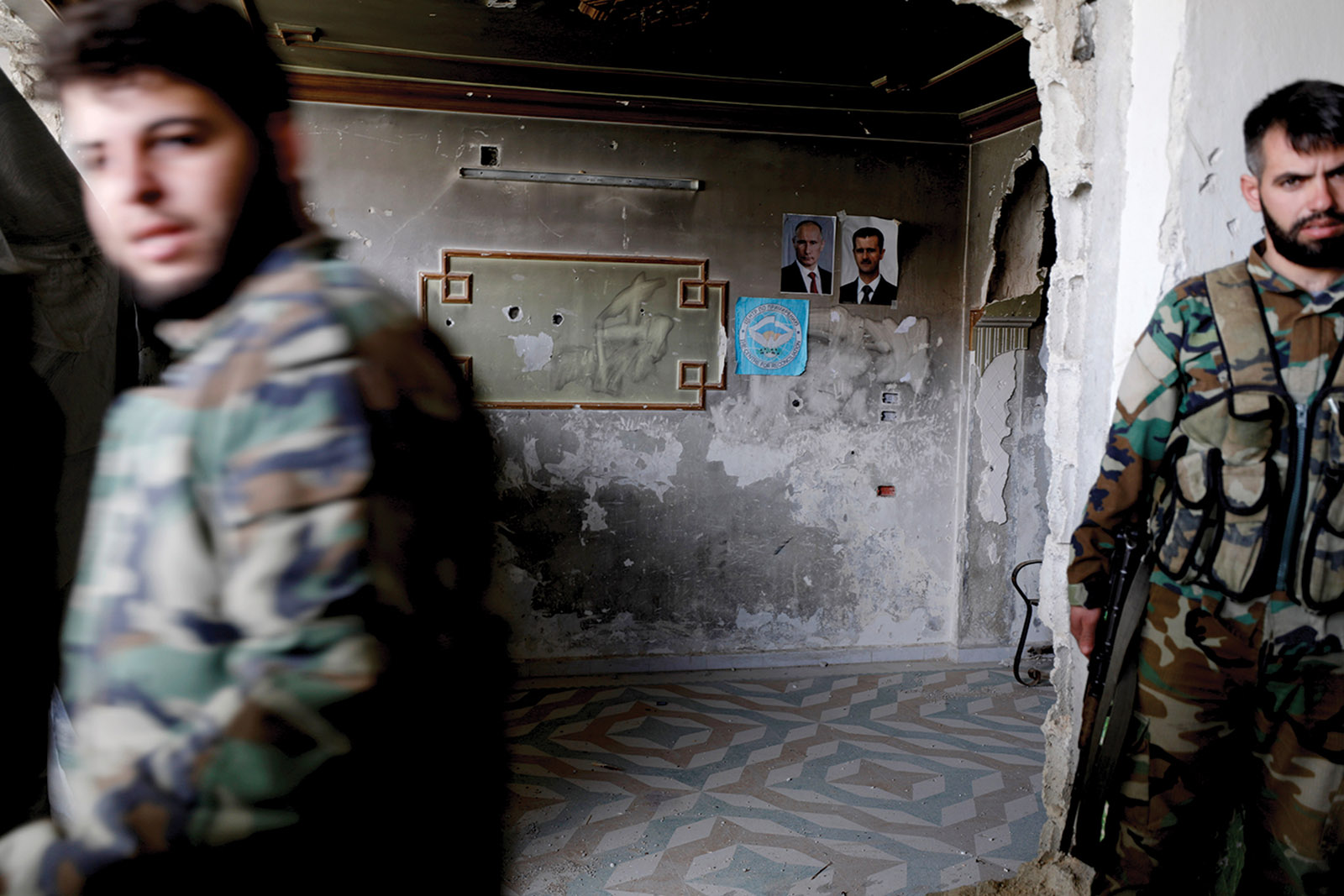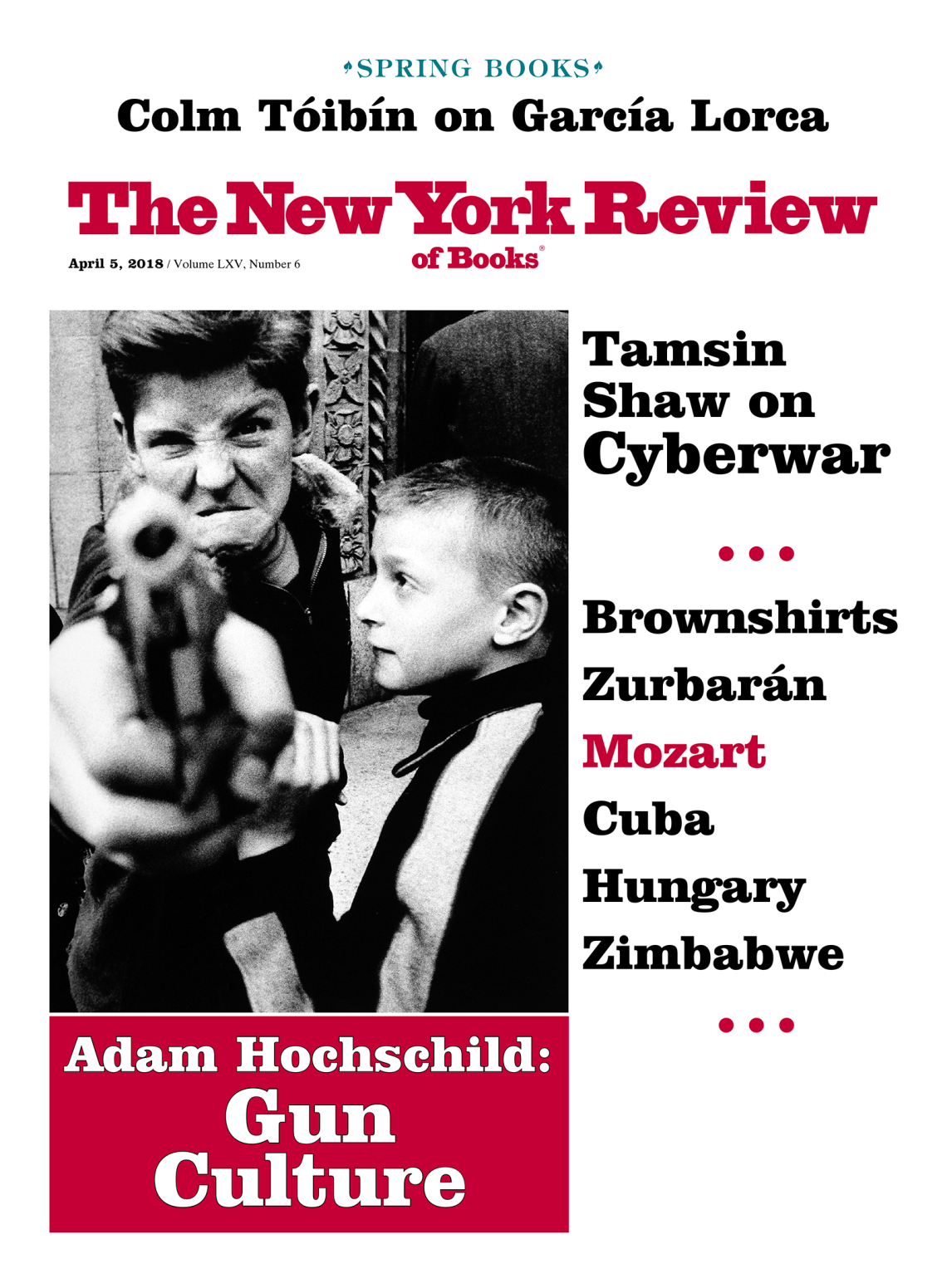In response to:
Syria’s New Normal from the March 8, 2018 issue
To the Editors:
Normally I would hesitate to correct a journalist of Charles Glass’s stature, but as a reporter who’s covered the war in Syria for several years now I have to point out some inaccuracies in his “Syria’s New Normal” [NYR, March 8].
First of all, it’s misleading to say that “only a few zones of rural Syria” are outside the regime’s control, above all since Kurdish-led forces control a good third of the country. This area isn’t a “desert” either; there is a desert area near Sinjar, but most of it is rich agricultural country often described as a “breadbasket.” The Kurds also control much of the Euphrates River Valley.
Second, Turkey’s “stated purpose” in invading Syria wasn’t “to control…Islamist jihadis.” The Turks have been very open about their intent to clear the Afrin region of the Kurdish militia. Occasionally they say it’s also to clear ISIS, but that’s a throwaway aside that no one can take seriously since ISIS has never been in that region of Syria and certainly isn’t there now. The only jihadis are the FSA fighters with whom Turkey is working hand-in-glove.
Third, with regard to the paragraph on the “Shiite crescent,” I don’t know what he’s talking about when he says “the defeat of Iraq’s Kurds by the Iraqi army and Shiite paramilitaries allow Iran’s influence to run across Iraq and Syria to Hezbollah’s enclaves in Lebanon.” What victories? Iraq’s Kurds worked together with the Iraqi army and Shiite paramilitaries to clear ISIS from Mosul. There were some clashes around Kirkuk, but they took place too far north to affect Iran’s access to the Syrian border. What allowed the so-called crescent to exist, above all, was the Iraq War and the rise of a Shiite government in Baghdad.
Finally, while he never mentions the Syrian Democratic Forces, a major player on the current battlefield map of Syria, he refers to the “US-backed Border Protection Force” as if it’s a real thing. My sources tell me it simply doesn’t exist.
Overall I found that the piece presented a misleading picture of the war in Syria as basically over, when in reality much of the country is outside regime control; the US, Russia, Turkey, and Iran still have boots on the ground; and, instead of winding down, the war seems to be mutating into separate conflicts between Assad and the FSA and the Kurds and Turkey, with the major question of how the regime will square off with the newly empowered Kurds still unresolved.
Seth Harp
Austin, Texas
Charles Glass replies:
Mr. Harp’s observations on the Syrian war are not as far removed from mine as his letter implies, perhaps more a matter of emphasis than substance. However, many of his criticisms miss the mark.
In terms of population rather than mere terrain, the Syrian government controls most of the country, perhaps as much as 85 percent. I specifically named the areas outside its grasp as “Idlib in the northwest, two areas adjoining the Jordanian and Israeli borders in the south, the Kurdish-held desert beside Iraq in the east, and a small enclave between Idlib and the Turkish border.” It is hard to understand which areas Mr. Harp feels are missing. In any case, the northeast that he calls a “breadbasket” is mostly desert, as those who have been there know, with some agricultural and grazing lands. The bulk of Syrian agriculture is concentrated in the west around Aleppo, Homs, and Hama—where grain, olives, cotton, and other staples grow in abundance—and the Ghouta orchards on the fringes of Damascus. A report in New Agriculturalist points out that “crop production is, for the most part, restricted by rainfall to the semi-arid west of the country, including the wetter coastal plain and mountains, and to the northern region along the Turkish border.” All of these areas, except the zones of Afrin and Idlib now occupied by Turkey, are in government hands.
Mr. Harp’s assertion that Turkey’s “stated purpose” in invading Syria was not “to control…Islamist jihadis” ignores Turkish president Recep Tayyip Erdoğan’s statement on the Turkish army’s invasion last October of Idlib province: “We will absolutely not allow the creation of a terror corridor along our borders.” Jihadists, not Kurds, controlled the Idlib region. There is a difference between “stated” and “real” purposes, and my reference was clearly to what Erdoğan claimed his objective to be. He said Turkey’s initial targets were jihadists not under its control. Only afterward did he turn his attention to the Kurds in Afrin.
Mr. Harp’s criticism of my use of the term “Shiite crescent” misses the fact that I was describing an impression shared by the Sunni Muslim monarchs in Amman, Riyadh, and Doha, rather than one of my own. On the issue of the Kurds and Iran, the elimination of ISIS’s territorial control in Iraq came about thanks to Kurdish fighters, the Iraqi army, and Iraqi militias with Iranian field support and American air cover. However, the Kurdish-Iraqi cooperation against ISIS did not prevent Iraqi forces, with Iranian and US approval, from conquering the “disputed territories” claimed by both Erbil and Baghdad, including Kirkuk, and reducing the Iraqi Kurds’ de facto independence from Baghdad. Iran emerged stronger, not weaker, from the post-ISIS order in Iraq and Syria.
The Border Protection Force (BPF) that the US said it is creating is based in part on the Syrian Democratic Forces (SDF), something I was not attempting to conceal. It includes, however, Arab tribes from the Syrian-Iraqi border areas. Whether it is called the SDF or the BPF is immaterial. What is relevant is that, under any name the US chooses, it keeps the northeast out of Syrian government control and gives the US a possible base for subversion against Damascus and its Iranian and Russian allies. US officials have repeatedly stated just that.
Finally, my use of the phrase “postwar” did not imply that the war in Syria is entirely over. I stated, and I see no evidence to counter this view, that the government has won the battle over the original casus belli: regime change. The fighting that prolongs the conflict, as H.G. Wells wrote in Mr. Britling Sees It Through of the later stages of World War I, is “a war without point, a war that has lost its soul, it has become mere incoherent fighting and destruction, a demonstration in vast and tragic forms of the stupidity and ineffectiveness of our species….” Like World War I, the battle in Syria goes on. And on.
This Issue
April 5, 2018
Bang for the Buck
Beware the Big Five
As If!



